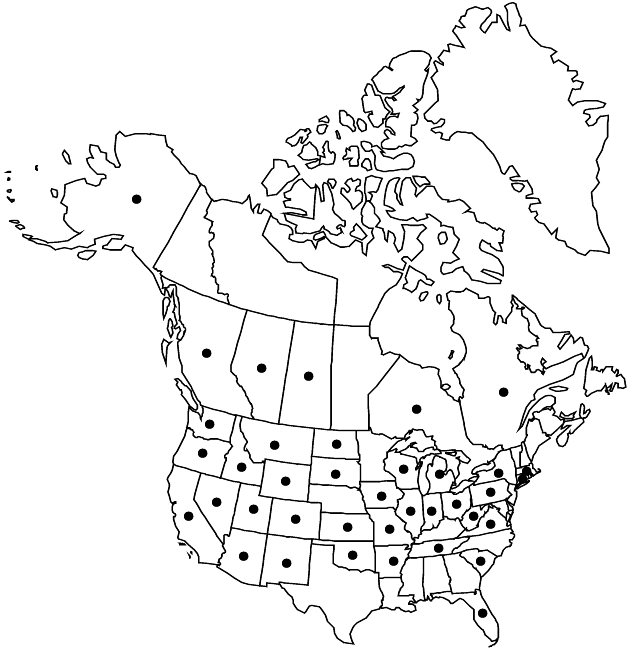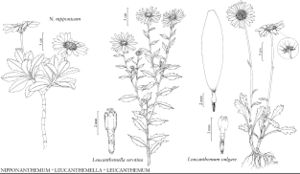Leucanthemum vulgare
Fl. Franç. 2: 137. 1779.
Perennials, 10–30 (–100+) cm. Stems simple or distally branched. Basal leaves: petioles 10–30 (–120) mm, expanding into obovate to spatulate blades 12–35 (–50+) × 8–20 (–30) mm, margins usually pinnately lobed (lobes 3–7+) and/or irregularly toothed. Cauline leaves petiolate or sessile; blades oblanceolate or spatulate to lanceolate or linear, 30–80+ × 2–15+ mm, margins of midstem leaves usually irregularly toothed proximally and distally. Involucres 12–20+ mm diam. Phyllaries (the larger) 2–3 mm wide. Ray-florets usually 13–34+, rarely 0; laminae 12–20 (–35+) mm. Ray cypselae 1.5–2.5 mm, apices usually coronate or auriculate. 2n = 18, 36, 54, 72, 90.
Phenology: Flowering spring–fall.
Habitat: Disturbed places, meadows, seeps, clearings
Elevation: 0–2000 m
Distribution

Introduced; Alta., B.C., Ont., Que., Sask., Alaska, Ariz., Ark., Calif., Colo., Conn., Fla., Idaho, Ill., Ind., Iowa, Kans., Mass., Mich., Mo., Mont., Nev., N.Mex., N.Y., N.Dak., Ohio, Okla., Oreg., Pa., S.C., S.Dak., Tenn., Utah, Va., Wash., W.Va., Wis., Wyo., Europe, widely adventive
Discussion
Some botanists (e.g., W. J. Cody 1996) have treated Leucanthemum ircutianum de Candolle, with blades of mid and distal cauline leaves oblong to oblong-lanceolate and not ± pinnate at bases, as distinct from L. vulgare.
Selected References
None.
Lower Taxa
"broader" is not a number.
